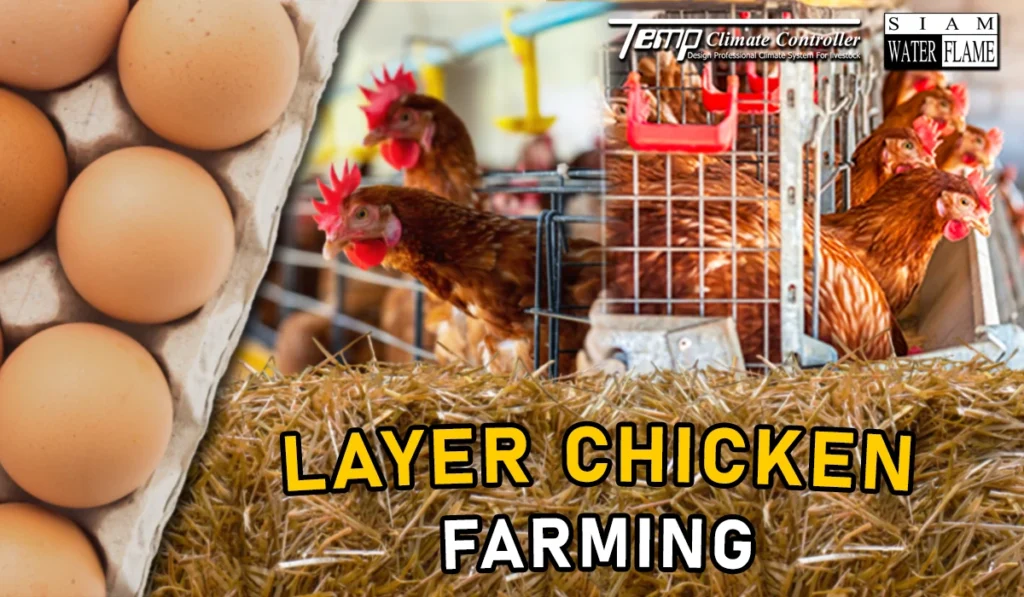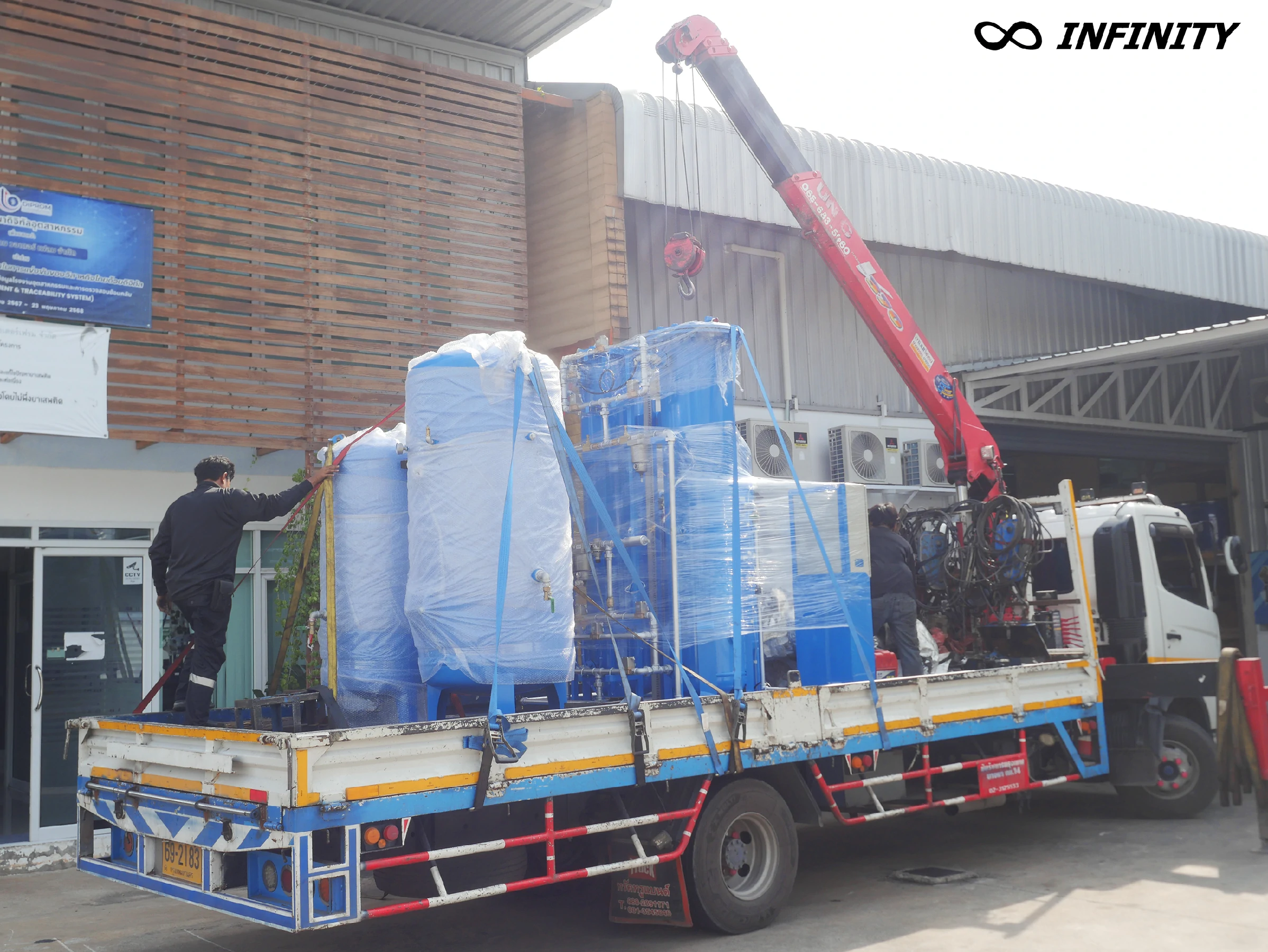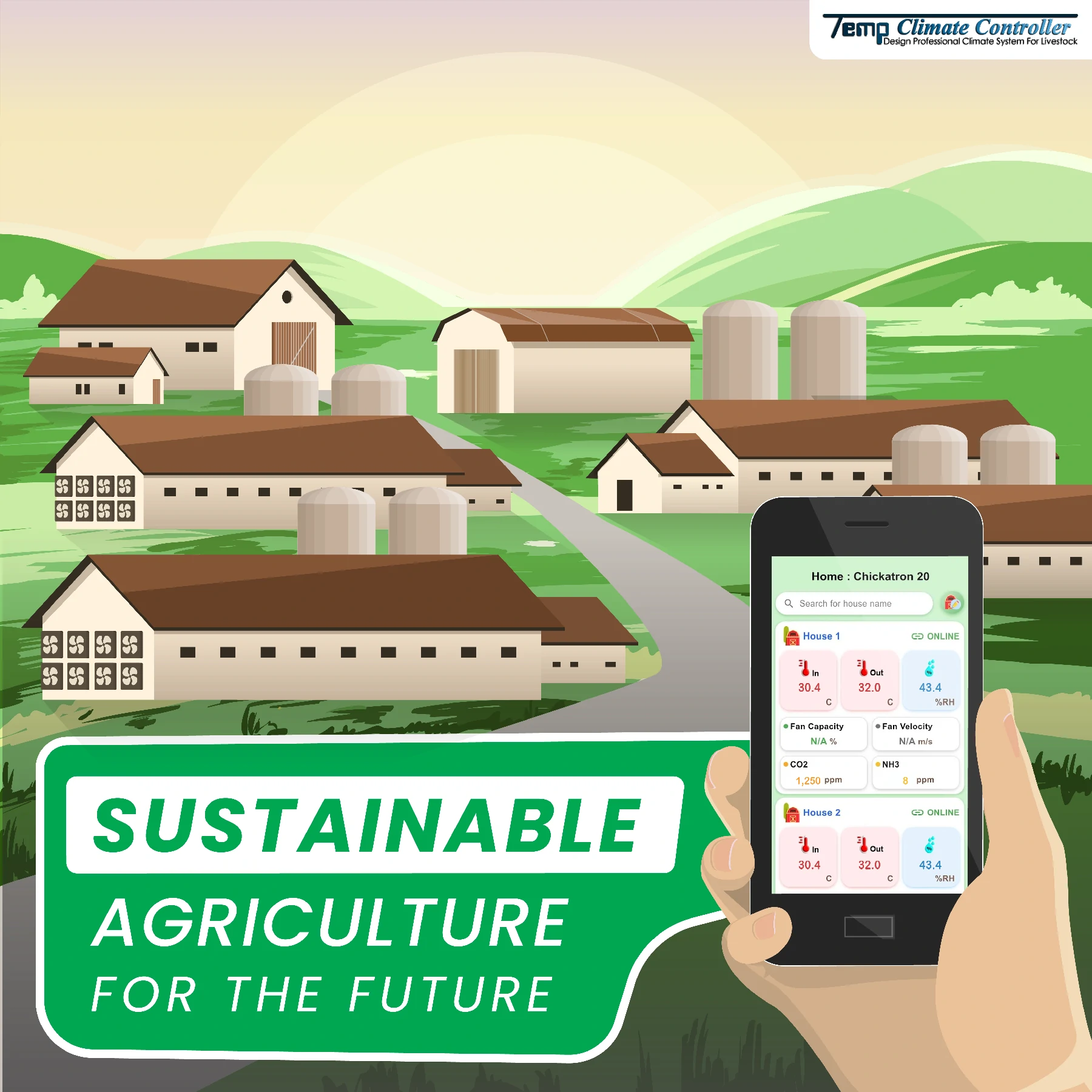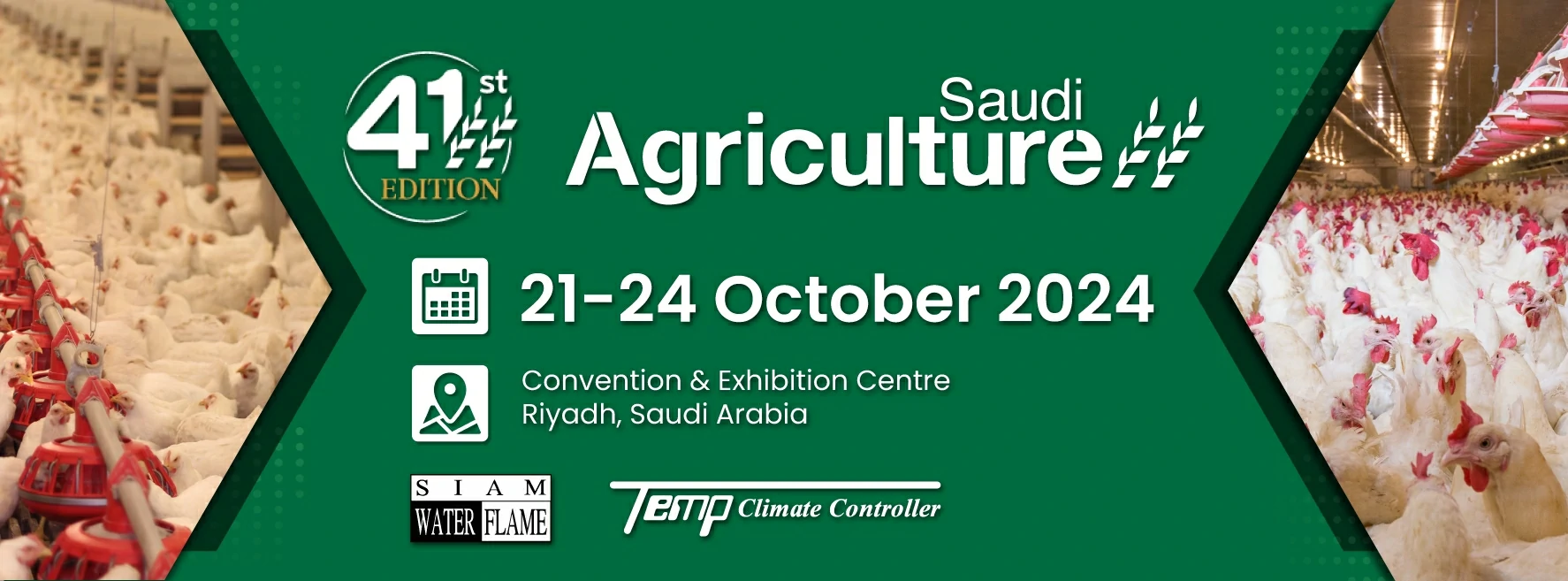Poultry Farm
The laying hen house must be strong, durable, windproof, sunproof, rainproof, as well as other animals such as birds, cats, mice and dogs, easy to clean. Stay away from the community to prevent bad smells. The structure should be concrete. There should be padding material such as husks 3-5 inches thick, and there should be 1 nest per 4 hens and 2 entrance-exit doors to recirculate and release the chickens to the free plot. If there is more than one house, each house should be spaced apart. more than 10 meters to provide good ventilation and prevent the spread of disease
water and food
There are 4 types of feed for egg chickens: mixed feed, feed feed, pellet feed or ready-to-eat food. and dietary supplements For laying hens 5 months of age and older, about half a liter of water should be given per day. If the chicken is dehydrated during the laying period will make small eggs The water provided should be clean. no germs Put it in a cylinder or bucket for the chickens to eat.
Problems and prevention
The problem of raising laying hens to be aware of is disease outbreaks caused by viruses and bacteria such as Newcastle disease. contagious bronchitis chicken cholera and chicken pox This can be prevented by vaccinating the chickens according to their age and vaccinating them regularly. Because each type of vaccine has a different protection period.

For those who want to try raising laying hens.
to build a career but don’t know where to start Today we have information on how to raise hens and eggs to leave. Basic information for newbies who want to raise laying hens. which will take you to know the species Raising laying hens with different methods of feeding – water Common problems in raising Including how to protect each other and of course we also have knowledge of equipment. Modern technology that would like to share with everyone to try and read.
Let’s get to know each breed of laying hens together.
laying hen breed There are 3 breeds of laying hens that Nigym raises in Thailand, namely, Thai road hens, Thai laying hens, Department of Livestock Development. and white-horned, crested hens Each species has
Different strengths as follows
1. Chicken Road Thai (Rhode Thai)
Half purebred chicken, half egg Can be raised to make use of both meat and eggs. Hereditary traits are Has light brown to brown hair. brown eggshell The first egg can be laid at about 168 days of age, the egg-laying rate is 94%, the yield is about 240 eggs per head per year.
2. Thai laying hens, Department of Livestock Development (DLD Layer Hen)
There are traits of the species. Light brown to dark brown fur brown wing feathers dark brown necklace bright red large crest big red wattle The red earrings are slightly white. The skin and shins are yellow. The tip of the tail is black. light brown eggshell The first egg is laid at 169 days old. The yield is approximately 290 eggs per head per year.

3. Small Horned White Leghorn Chicken (Single Comb White Leghorn)
a purebred chicken The characteristics of the breed are small, white hair, eggshell white, fertile, fast laying, eggs can be laid at the age of 4 and a half months to 5 months, the yield is about 300 eggs per head per year.
Choosing a breed of laying hens should be a good breed of chicken Selected as a laying hen especially and has the same characteristics as the breed of laying hens It comes from a farm that is reliable and standardized. It has a high survival rate, is strong and can withstand the Thai environment well. In addition, it should have high yields, resistant eggs, large eggs and thick shells. It is important to inquire from other farmers to compare the data before making a decision.
ขอบคุณข้อมูล สำนักงานปศุสัตว์จังหวัดพิจิตร
Poultry farming
The laying hen house must be strong, durable, windproof, sunproof, rainproof, as well as other animals such as birds, cats, mice and dogs, easy to clean. Stay away from the community to prevent bad smells.
The structure should be concrete. There should be padding material such as husks 3-5 inches thick, and there should be 1 nest per 4 hens and 2 entrance-exit doors to recirculate and release the chickens to the free plot. If there is more than one house, each house should be spaced apart. more than 10 meters to provide good ventilation and prevent the spread of disease
water and food
There are 4 types of feed for egg chickens: mixed feed, feed feed, pellet feed or ready-to-eat food. and dietary supplements For laying hens 5 months of age and older, about half a liter of water should be given per day. If the chicken is dehydrated during the laying period will make small eggs The water provided should be clean. no germs Put it in a cylinder or bucket for the chickens to eat.

Problems and prevention
The problem of raising laying hens to be aware of is disease outbreaks caused by viruses and bacteria such as Newcastle disease. contagious bronchitis chicken cholera and chicken pox This can be prevented by vaccinating the chickens according to their age and vaccinating them regularly. Because each type of vaccine has a different protection period.
For those who want to try raising laying hens.
to build a career but don’t know where to start Today we have information on how to raise hens and eggs to leave. Basic information for newbies who want to raise laying hens. which will take you to know the species Raising laying hens with different methods of feeding – water Common problems in raising Including how to protect each other and of course we also have knowledge of equipment. Modern technology that would like to share with everyone to try and read.
Let’s get to know each breed of laying hens together.
laying hen breed There are 3 breeds of laying hens that Nigym raises in Thailand, namely, Thai road hens, Thai laying hens, Department of Livestock Development. and white-horned, crested hens Each species has

Different strengths as follows
1. Chicken Road Thai (Rhode Thai)
Half purebred chicken, half egg Can be raised to make use of both meat and eggs. Hereditary traits are Has light brown to brown hair. brown eggshell The first egg can be laid at about 168 days of age, the egg-laying rate is 94%, the yield is about 240 eggs per head per year.
2. Thai laying hens, Department of Livestock Development (DLD Layer Hen)
There are traits of the species. Light brown to dark brown fur brown wing feathers dark brown necklace bright red large crest big red wattle The red earrings are slightly white. The skin and shins are yellow. The tip of the tail is black. light brown eggshell The first egg is laid at 169 days old. The yield is approximately 290 eggs per head per year.
3. Small Horned White Leghorn Chicken (Single Comb White Leghorn)















